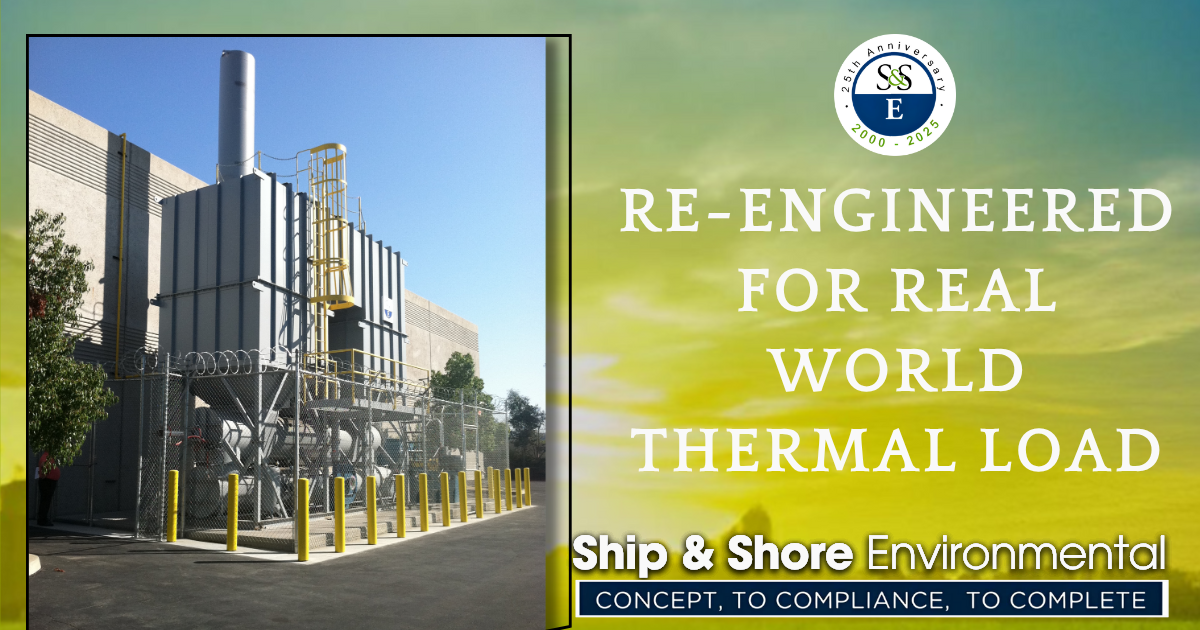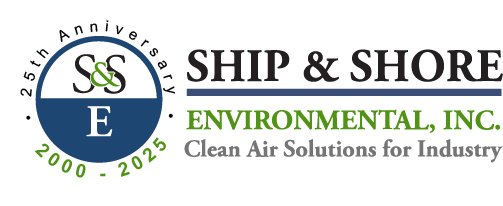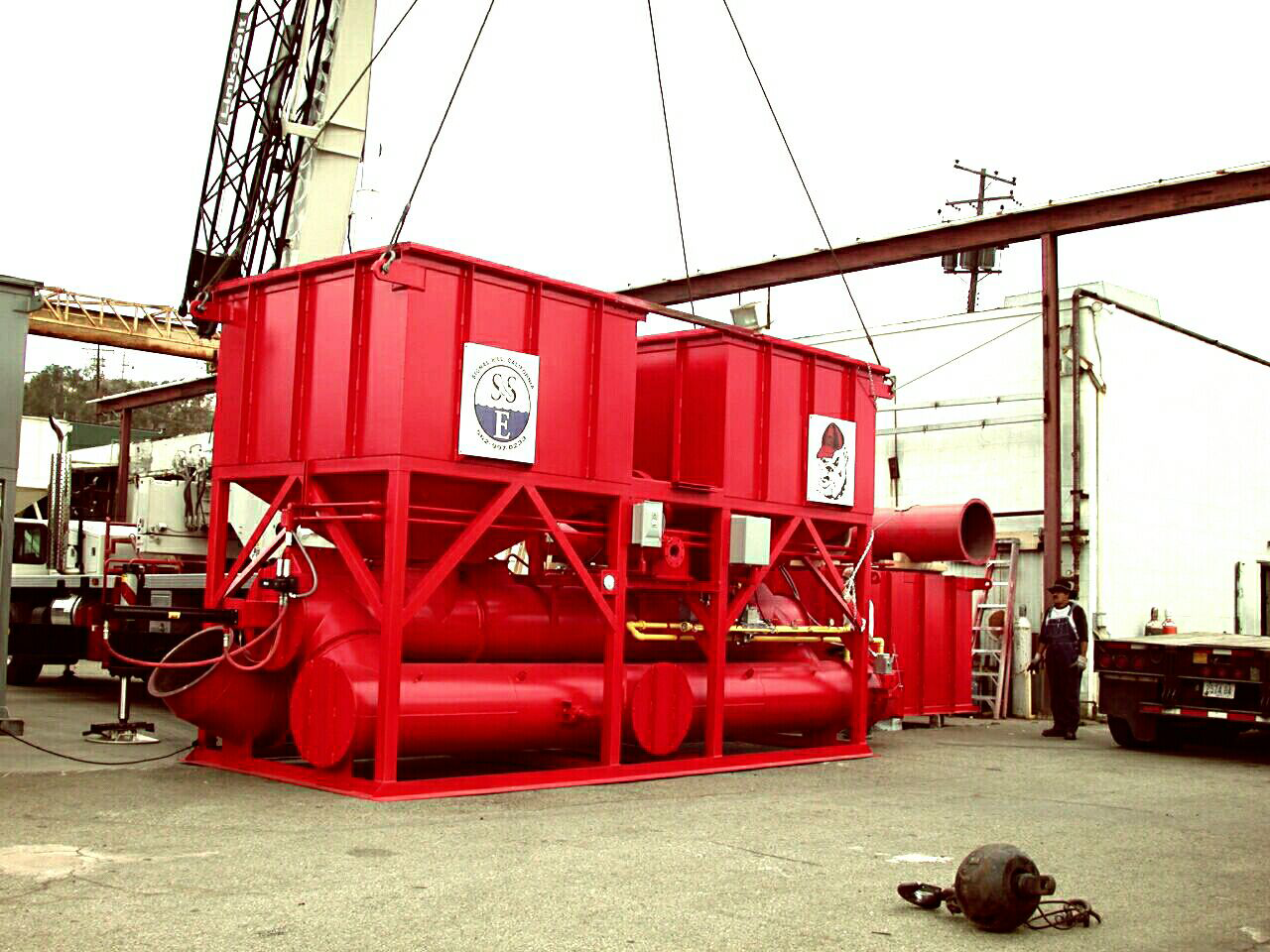
CASE STUDY: Reality-Ready RTOs: Why Real-World Thermal Load Matters
June 25, 2025 12:00 am 6.25.25
6.25.25
CASE STUDY: Reality-Ready RTOs: Why Real-World Thermal Load Matters
Introduction
We were brought into a California facility facing sustained high-temperature emissions, a failing oxidizer, and increasing compliance pressure. This is where Ship & Shore shines — where others offered off-the-shelf replacements, we engineered a solution that could actually survive the process.
The Problem
Some oxidizer failures happen fast. Others collapse slowly. This plant was headed for the latter — and fast.
Their emissions profile had changed:
– New raw materials
– Mid-process shifts
– Stricter limits from AQMD
The result: sustained inlet temperatures above 600°F — far beyond what their aging system was built to handle.
What we saw:
– Refractory failure every six months
– Burner cycling under heat stress
– Inconsistent destruction efficiency
– Manual throttling to avoid temperature spikes
Most vendors proposed a “replacement in kind.” Same footprint. Same limitations. Still not built for the actual heat.
We didn’t take that bait. We waited. We listened. Then we re-engineered the whole thing.
The Solution
-
Step 1: Process Mapping & Thermal Profiling
We installed portable sensors and collected 14 days of real-world production data — capturing not just temperatures, but rate-of-rise, dwell time, and BTU distribution across duct zones. That became our baseline — not theory, but facts.
-
Step 2: Refractory Redesign
We scrapped the cast-in-place model and built a two-tier system:
– Primary hot face: 60% alumina brick, mechanically anchored
– Backup insulation: 3” of 8-lb ceramic fiber + castable lining
This wasn’t just heat resistance. It was engineered thermal memory — designed to reduce cycling fatigue and hot spots.
-
Step 3: Media Selection
We specified a custom mix:
– Structured high-alumina ceramic
– Random-packed saddle media
Most firms would’ve defaulted to a single media type. That would’ve killed efficiency under these thermal loads. Ours didn’t.
-
Step 4: Burner & Controls
We installed a low-NOx modulating burner with:
– Dual thermocouple feedback
– PLC control with manual override
– Auto shutdown and remote alerts
The system is now stable, responsive, and audit-ready.
-
Step 5: Install + Commissioning
In a 72-hour window:
– We dismantled the compromised unit
– Rebuilt duct tie-ins with high-temp expansion joints
– Completed final refractory and insulation
– Ran full test cycles at load and tuned burner modulation until spec was exceeded
No prefab. No assumptions. Just field-engineered performance.
The Results
– 99.95% VOC destruction efficiency
– Zero unplanned shutdowns in the first six months
– 19% reduction in fuel use, via downstream heat recovery
– Refractory life extended from 6 months to 36+ months
– Full AQMD compliance, with automated logs and remote alerting
The Real Result
Operators don’t babysit the system anymore.
Compliance reports go out without stress.
The plant runs. The system runs.
And nobody’s waiting for it to fail.
Request a Technical Assessment
[shortcode alias=”cta_tech_assessment_green”]
Tags: CASESTUDY, CleanAirSolutions, HighTempExhaust, MadeInUSA, RTO, ShipandShoreCategorised in: Achievements, Case Study & White Papers, Industry news, News, News, RTO, Ship & Shore, VOC Abatement

